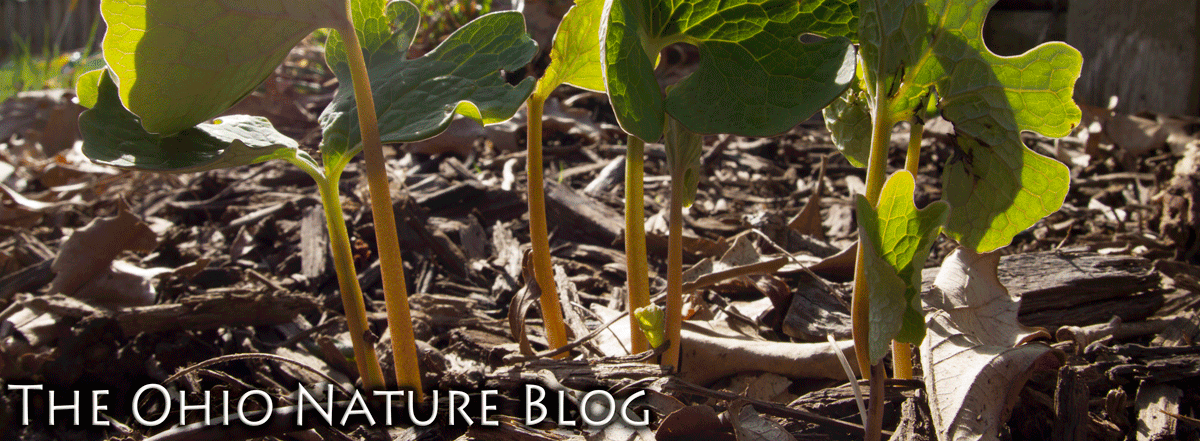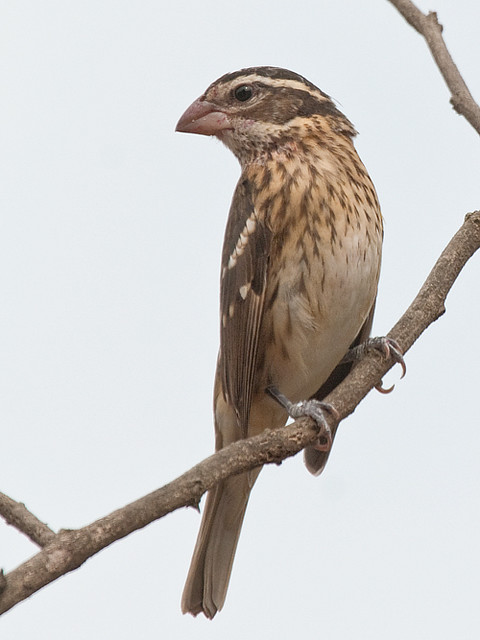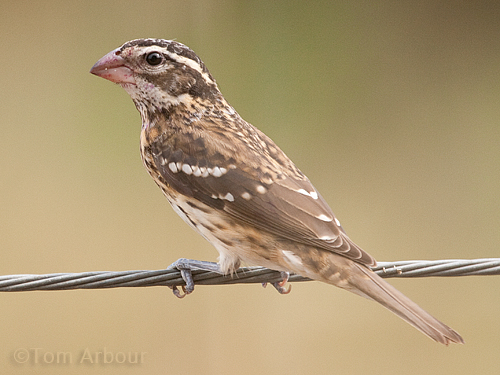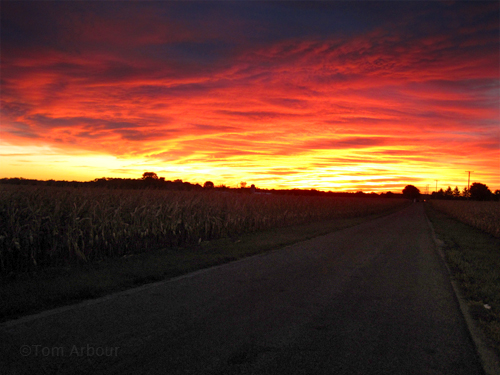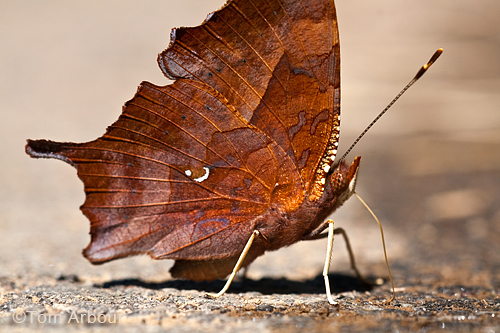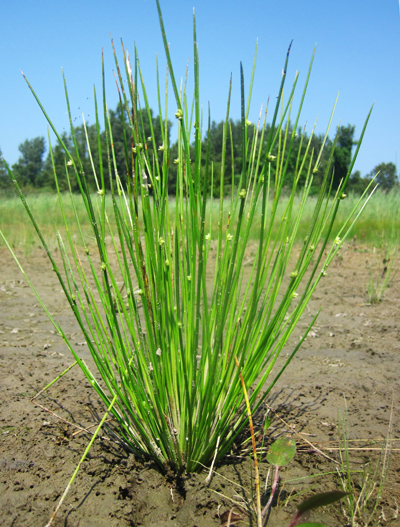What goes around eventually comes around, and I have been bitten by the technology bug, unfortunately. My #1 computer is down for the count- The mirrored RAID array in my Dell computer has failed, and my two redundant hard drives are inoperable. By going with a system that had two redundant hardrives, I was being extra cautious- or so I thought. In the end, it wasn't the hard drives that went bad, but the system that creates the two copies screwed up each hard drive. FORTUNATELY, I'm only going to loose a few months of photographs that weren't backed up. With a combination of online backup using Backblaze and manually backing up photographs on DVD, I consider myself very fortunate
Nevertheless, since my #1 computer is inoperable (right now I'm using an ancient Mac on permanent loan to me by a friend), my digital photography workflow will be seriously hampered, and the usual photography centric posts on this blog will come to a temporary pause. The blessing in disguise? Perhaps this is an opportunity to brush up on my nature writing.
Tom
Wednesday, September 29, 2010
Wednesday, September 22, 2010
Mourning Dove
This is my all-time favorite image of a morning dove that I have personally taken. Usually, doves are on the ground scuttling about on their short legs, pecking around. This typical posture does not make for interesting photographs. This past Saturday at the Deer Haven Preserve, I was lucky enough to watch this bird land on a branch but and give me this fabulous "look-back" pose. I hope to work more with this model in the future.
Tom
Sunday, September 19, 2010
Saturday, September 18, 2010
Female Rose-breasted Grosbeak
Today I started a new venture- I'll be volunteering my time with the Preservation Parks of Delaware County about once a month or so working at the Deer Haven Lodge nature center. Today was my first day, and although visitation was light by human beings, the bird feeders there were quite active. This beautiful female rose-breasted grosbeak stopped by the feeding station, and I had my camera ready. What a great way to spend an afternoon.
Tom
Friday, September 17, 2010
Shawnee Smilax
On our recent visit to Shawnee State Park and Forest over the labor day weekend, I tried to climb a ridge one evening to get a clear view of the sunset. I was unable to find a clear view of the western sky, so I set up Megan's Canon SX20 is on my tripod to take an image of the interior of the forest.
Shawnee's dry ridgetop forests are often blanketed with the tangling vines of greenbriars (Smilax species). Thank goodness for trails, because you don't want to walk through a patch of these without thick pants.
Why was I shooting with Megan's camera? I forgot my wide angle lens for the trip! Megan's SX20 has a nice wide angle/telephoto zoom, so that is what I brought with me on my evening photo adventure. For this shot, I captured 8 different exposures, and combined them using Photomatix Pro. This technique of taking varying exposure information from multiple photographs and squishing it all together into one photograph is called High Dynamic Range photography, or now simply known as HDR. It's a technique that is evolving- many point and shoot cameras can create this type of image without extra software.
Some have scoffed at HDR while others love it- it is certainly a polarizing topic in photography. To me, it is another tool in the box of camera goodies that I have at my disposal. And for something like the interior of a forest, at sunset, with bright highlights and very dark shadows, using HDR imaging allows me present an image of what my eyes actually saw better than a single photograph would have allowed.
-Tom
Wednesday, September 15, 2010
Friday, September 10, 2010
Tuesday, September 07, 2010
Blue Mistflower, Conoclinium coelestinum
Check out TA Photography for a MUCH larger image.
Tom
Saturday, September 04, 2010
Stalking the Arrow Clubtail
And for my third post of the day (that has to be a record!), I wanted to give a quick update for those that saw my talk at the Great Lakes Odonata Society meeting this past July. I dropped in to Kenney Park this evening to see if the arrow or russet-tipped clubtails were flying, and it didn't take more than five minutes to spot this guy. Unfortunately, I didn't get a good shot, and it soon zipped up into the trees. This is the arrow clubtail, previously unknown from Franklin County until I photographed it in 2007. In late 2008, Bob Glotzhober and I went to the Olentangy to look for them again, and we found the super rare russet-tipped clubtail, which had never been collected or documented in all of central Ohio. No luck with the russet-tipped today, but if you go to Kenney Park to see these clubtails, be on the lookout for something that looks like the dragon pictured above, but with a brownish tip to the abdomen.
I'm super pumped- tomorrow Megan, Weston and I are headed to Shawnee- A quick two night va-cay. I'm super pumped.
Tom
Nature Isn't Always Pretty
I hadn't seen a eastern cottontail rabbit (Sylvilagus floridanus) in our suburban yard until this morning- and it wasn't exactly the encounter I was hoping for. As I stepped outside onto our front porch this morning, I scared up a band of five crows huddled over something at the edge of our driveway. As I walked over, it didn't take long to figure out what they were after. Megan came out with Weston, and our friend Kathleen met us to walk to the Farmer's market. They wanted me to dispose of the body, but I let nature take its course. Upon our return, a few bits of fluff were all that remained.
Tom
Striking Botanical Gold
This is my latest contribution to "Ohio Flora" a new blog all about the native and naturalized plants of Ohio.
-Tom-
Many of you know that I've spent the last seven years of my life as a botanist for the ODNR Division of Natural Areas and Preserves. I didn't start out that way. Initially I thought I knew quite a bit about Ohio's flora, but I was quickly humbled by the knowledge of people like Jim McCormac, Greg Schneider, and Rick Gardner. I really do remember one of the first days out in the field when Greg explained to me the basic differences between a grass and a sedge. I've come a long way.
That brings us to last week, where I had perhaps my best discovery yet. This summer I've been finishing out a grant as an employee of the Division of Wildlife since the demise of Natural Areas and Preserves as a stand-alone division this past June. I decided to head up to Sheldon Marsh State Nature Preserve to see if I could find the elusive Potentilla paradoxa (state endangered) or perhaps Sagitarria cuneata, (state threatened).
I was skunked with those two species, but on the last mudflat I examined, I struck botanical gold. My partners dropped me off at a small island near the mouth of the marsh. I've visited the mudflat surrounding the island several times, but today, something caught my eye. Like a bit gleaming precious metal, one grass-like plant stood out above the carpet of spikerushes and water purslane.
Below me was a bulrush, but unlike the much more common and large species like Softstem bulrush (Schoenoplectus taebernaemontani) or common threesquare (Schoenoplectus pungens), this plant was miniature. Its green culms (stems) weren't much longer than a robust blunt spikerush (Eleocharis compressa) but instead of having a terminal inflorescence (flower head), the spikes were lateral, with long bracts above the spikes (a group of sedge flowers).
Immediately I knew this was something REALLY cool. The first instinct of a professional botanist is to pick the plant to examine it in the hand. It's a horrible habit. I've tried to train my brain to stop and think before I pick something that I just found that I'm super excited about. Fortunately, that gear kicked in and I began to look for more plants without any luck. Only one clump! Ugh....what to do? Without a specimen, I wouldn't be able to identify it. I carefully pried loose three culms from the mud, leaving eight intact. I was super excited, not really knowing what I found, but also realizing that it was probably something really cool. I have been studying the flora of the Lake Erie Coast for almost five years, but had never seen anything quite like what I had just collected.
Back at the office, I "Googled" the online edition of Volume 23 of the Flora of North America- the volume that treats the sedge family. Fortunately for me, there are only a handful of Scheonoplectus species in Ohio, so I quickly narrowed down my specimen to one of two things- Pursh's bulrush (Schoenoplectus purshianus) and Smith's bulrush (Schoenoplectus smithii). A look at a seed underneath the dissecting microscope, and the fact that the bract above the inflorescence made me believe this was indeed Smith's bulrush. This state endangered species was last seen along the Lake Erie Coast in 1988 and is known from only one other modern location in Ohio.
I sent a few photos to Rick Gardner and Dan Boone, who had had last observed this plant in Ohio in 2006. Dan called that afternoon and said "Tom, you've got Smithii". But there was only one problem- I only found one plant at Sheldon Marsh. Smith's bulrush is an annual that produces thousands of seeds. The seeds are incorporated into the soil, lying in wait for decades until the right conditions to return once again. I had found only one plant, so my find could just be a meaningless waif. I needed to find more.
So I decided to check out the last place where it had been observed- East Harbor State Park. Dr. Ron Stuckey had documented two plants, yes, only two plants in 1988. Perhaps it had returned to East Harbor this year as well?
After walking the mile and a half to the location where he collected it along a rip-rap wall, I found what I was expecting- the habitat was gone-no mudflats, just the open water of a deep boating channel. I wasn't ready to give up though. There was still one more place I needed to look- a deep water pond and mudlflats of an experimental wetland right near the parking lot. I was expecting to see the state endangered Caribbean spikerush, (Eleocharis geniculata) growing there- I had observed it five years prior, but Smith's bulrush was not there then- would it be now?
After a few stops along the way where we found a few other state listed species, we finally set out to find the experimental wetland. By this time, since I had found some other goodies- I was prepared to find the Caribbean spikerush, get into our nearby vehicle and drive off to our next spot.
When we arrived at the wetland, I saw great mudflats with tons of spikerushes. My attention immediately turned to the rhizomatous red-footed spike-rush (Eleocharis erythropoda) and a really big weird thing that I hadn't seen before. Or at least I thought. Carpeting the mudflats was the healthiest population of Caribbean spikerush I had seen. I had known this species as micro plant with culms not much longer than an inch growing in dried out mud pools of abandoned limestone quarries. But here on these mudflats, with optimal conditions, the clumps were downright huge, probably eight inches across.
It didn't take but a few more steps though, and the shiny botanical gold shined into my eyes once again. A giant clump of Smith's bulrush was right at my feet! COOL! It was such a satisfying moment- I had set out to find more of this plant, and right there at my feet was a robust clump. I looked around with Chris Grimm, my botanical partner-in-crime this past August, and we just kept seeing more clumps- As we walked around the mudflat, no fewer that 75 Smith's bulrush were bursting from the mud. How cool!
This past week has probably been my most satisfying week in seven years of botanizing around Ohio because of the Smith's bulrush find. Only a handful of plants had ever been documented on Lake Erie's shore in the history of Ohio's botanical exploration, and I had found the mother-load. In a week, years of searching for rare and unusual things in northern Ohio paid off right there in a mud puddle at East Harbor State Park. I feel great about the work I've done- the hundreds of specimens that I have collected and processed, the thousands of miles I have driven across northern Ohio. I certainly won't be retiring as a botanist, but this phase of my career will soon be ending. I had the best job that I could ever ask for the past seven years. But like all good things, it must come to an end, and I will look back with only fond memories- especially of a little bulrush named Smithii.
Tom
-Tom-
An Ohio mega-rarity, Schoenoplectus smithii
Many of you know that I've spent the last seven years of my life as a botanist for the ODNR Division of Natural Areas and Preserves. I didn't start out that way. Initially I thought I knew quite a bit about Ohio's flora, but I was quickly humbled by the knowledge of people like Jim McCormac, Greg Schneider, and Rick Gardner. I really do remember one of the first days out in the field when Greg explained to me the basic differences between a grass and a sedge. I've come a long way.
That brings us to last week, where I had perhaps my best discovery yet. This summer I've been finishing out a grant as an employee of the Division of Wildlife since the demise of Natural Areas and Preserves as a stand-alone division this past June. I decided to head up to Sheldon Marsh State Nature Preserve to see if I could find the elusive Potentilla paradoxa (state endangered) or perhaps Sagitarria cuneata, (state threatened).
I was skunked with those two species, but on the last mudflat I examined, I struck botanical gold. My partners dropped me off at a small island near the mouth of the marsh. I've visited the mudflat surrounding the island several times, but today, something caught my eye. Like a bit gleaming precious metal, one grass-like plant stood out above the carpet of spikerushes and water purslane.
 |
| Mudflat at Sheldon Marsh State Nature Preserve |
Immediately I knew this was something REALLY cool. The first instinct of a professional botanist is to pick the plant to examine it in the hand. It's a horrible habit. I've tried to train my brain to stop and think before I pick something that I just found that I'm super excited about. Fortunately, that gear kicked in and I began to look for more plants without any luck. Only one clump! Ugh....what to do? Without a specimen, I wouldn't be able to identify it. I carefully pried loose three culms from the mud, leaving eight intact. I was super excited, not really knowing what I found, but also realizing that it was probably something really cool. I have been studying the flora of the Lake Erie Coast for almost five years, but had never seen anything quite like what I had just collected.
Back at the office, I "Googled" the online edition of Volume 23 of the Flora of North America- the volume that treats the sedge family. Fortunately for me, there are only a handful of Scheonoplectus species in Ohio, so I quickly narrowed down my specimen to one of two things- Pursh's bulrush (Schoenoplectus purshianus) and Smith's bulrush (Schoenoplectus smithii). A look at a seed underneath the dissecting microscope, and the fact that the bract above the inflorescence made me believe this was indeed Smith's bulrush. This state endangered species was last seen along the Lake Erie Coast in 1988 and is known from only one other modern location in Ohio.
I sent a few photos to Rick Gardner and Dan Boone, who had had last observed this plant in Ohio in 2006. Dan called that afternoon and said "Tom, you've got Smithii". But there was only one problem- I only found one plant at Sheldon Marsh. Smith's bulrush is an annual that produces thousands of seeds. The seeds are incorporated into the soil, lying in wait for decades until the right conditions to return once again. I had found only one plant, so my find could just be a meaningless waif. I needed to find more.
So I decided to check out the last place where it had been observed- East Harbor State Park. Dr. Ron Stuckey had documented two plants, yes, only two plants in 1988. Perhaps it had returned to East Harbor this year as well?
After walking the mile and a half to the location where he collected it along a rip-rap wall, I found what I was expecting- the habitat was gone-no mudflats, just the open water of a deep boating channel. I wasn't ready to give up though. There was still one more place I needed to look- a deep water pond and mudlflats of an experimental wetland right near the parking lot. I was expecting to see the state endangered Caribbean spikerush, (Eleocharis geniculata) growing there- I had observed it five years prior, but Smith's bulrush was not there then- would it be now?
After a few stops along the way where we found a few other state listed species, we finally set out to find the experimental wetland. By this time, since I had found some other goodies- I was prepared to find the Caribbean spikerush, get into our nearby vehicle and drive off to our next spot.
When we arrived at the wetland, I saw great mudflats with tons of spikerushes. My attention immediately turned to the rhizomatous red-footed spike-rush (Eleocharis erythropoda) and a really big weird thing that I hadn't seen before. Or at least I thought. Carpeting the mudflats was the healthiest population of Caribbean spikerush I had seen. I had known this species as micro plant with culms not much longer than an inch growing in dried out mud pools of abandoned limestone quarries. But here on these mudflats, with optimal conditions, the clumps were downright huge, probably eight inches across.
It didn't take but a few more steps though, and the shiny botanical gold shined into my eyes once again. A giant clump of Smith's bulrush was right at my feet! COOL! It was such a satisfying moment- I had set out to find more of this plant, and right there at my feet was a robust clump. I looked around with Chris Grimm, my botanical partner-in-crime this past August, and we just kept seeing more clumps- As we walked around the mudflat, no fewer that 75 Smith's bulrush were bursting from the mud. How cool!
This past week has probably been my most satisfying week in seven years of botanizing around Ohio because of the Smith's bulrush find. Only a handful of plants had ever been documented on Lake Erie's shore in the history of Ohio's botanical exploration, and I had found the mother-load. In a week, years of searching for rare and unusual things in northern Ohio paid off right there in a mud puddle at East Harbor State Park. I feel great about the work I've done- the hundreds of specimens that I have collected and processed, the thousands of miles I have driven across northern Ohio. I certainly won't be retiring as a botanist, but this phase of my career will soon be ending. I had the best job that I could ever ask for the past seven years. But like all good things, it must come to an end, and I will look back with only fond memories- especially of a little bulrush named Smithii.
Tom
Thursday, September 02, 2010
This Day, Minus Three Years
Isn't it amazing how digital cameras allow us to document practically ever day of our lives? I take photos almost every day, and I'm starting to build up quite a collection- over 300 Gigabytes of still images. I'm using a service called Backblaze to backup my important files to "the cloud" so that if our house burns down, I won't loose them all. The problem with this process is that it is slower than molasses when you've got to send over 500 gigabytes across the internet. I've been uploading data to them for a month almost nonstop, and I've sent just over 130 GB. As long as I don't create data faster than I upload it, I figure that eventually, I'll have everything backed up on a remote server in San Francisco.
From time to time, I check what's been backed up, and all of my photos from 2007 have been uploaded. It's hard to believe I've gone from exclusively point and shoot photography to where I am today, but time does fly. Tonight I asked the question, just what was I doing on this day back in 2007? It wasn't hard to figure out. Megan and I were celebrating our first wedding anniversary a day early by attending her friend's wedding at the Cincinnati Nature Center. As we left to head back to the hotel, I snapped this amazing shot of the beloved white-tailed deer, Odocoileus virginianus.
I find it pretty amazing that I can go back and know what I was doing exactly three years ago today. And it's just only going to get worse since everybody is carrying a capable cell phone camera with them, we'll all be documenting every waking moment of our lives. Here is the image that I took on this day three years ago- What was the subject of your "three years ago" photograph?
Tom
Wednesday, September 01, 2010
Canada Thistle, Gray Hairstreak
Since I'm just a butterfly beginner, everything that I see is interesting and new. I believe this is a Gray Hairstreak, Strymon melinus. I captured this image last Friday afternoon, August 27, on the Delaware Wildlife Area.
Tom
Subscribe to:
Posts (Atom)
